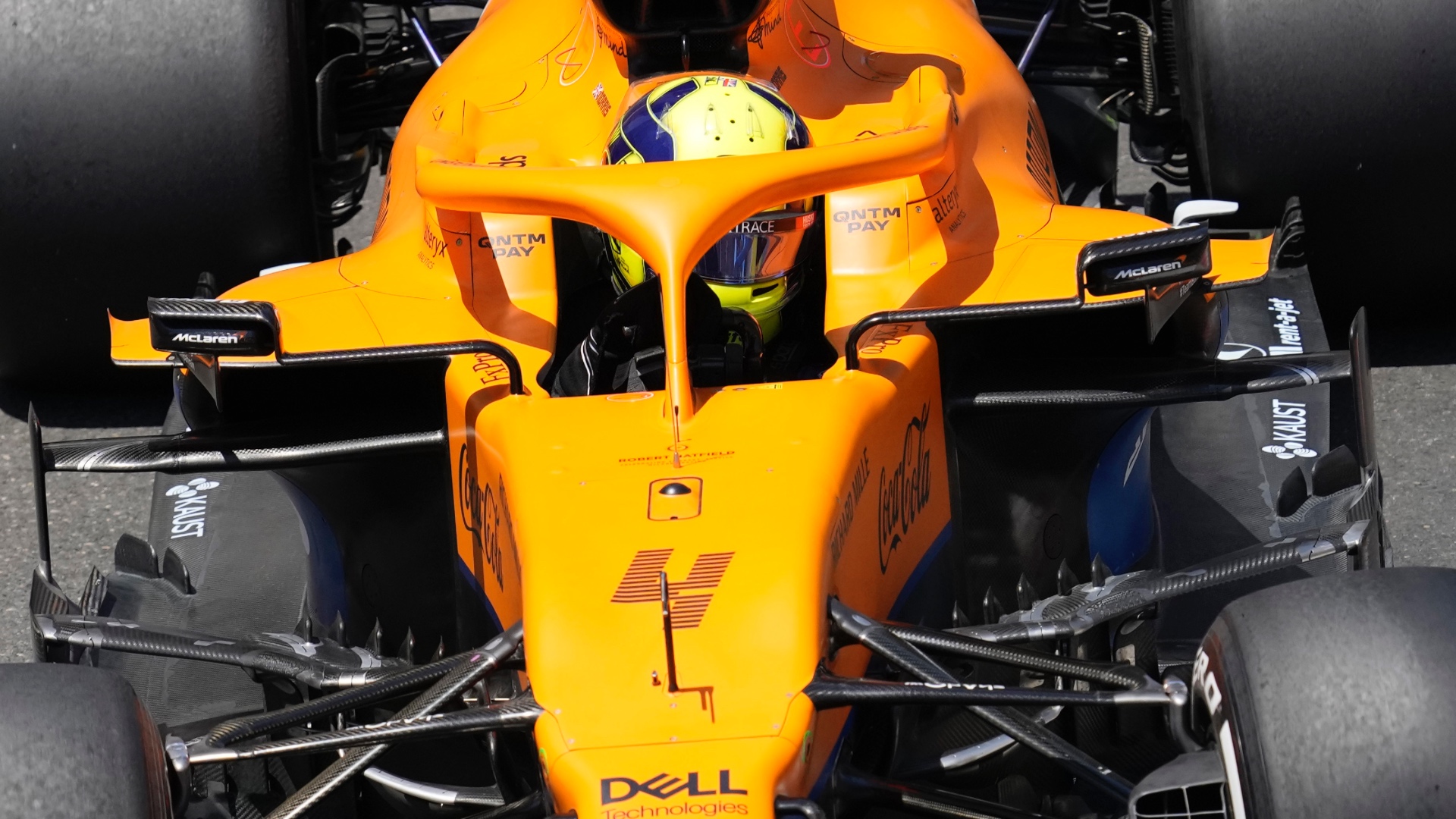

In the preceding post, The Drive’s Guides & Gear team broke down a lot of what a Formula One steering wheel does. We talked about every button, knob, rotary, paddle, light, and screen, what they do, and how the drivers and teams interact with those controls during any given race. And yet, that wasn’t good enough for us.
Given the high level of access we’ve been granted to the F1 teams, we realized we could go beyond a simple explainer and instead create the definitive guide to all things related to these complex steering wheels, one that would satiate our own hunger for all things F1.
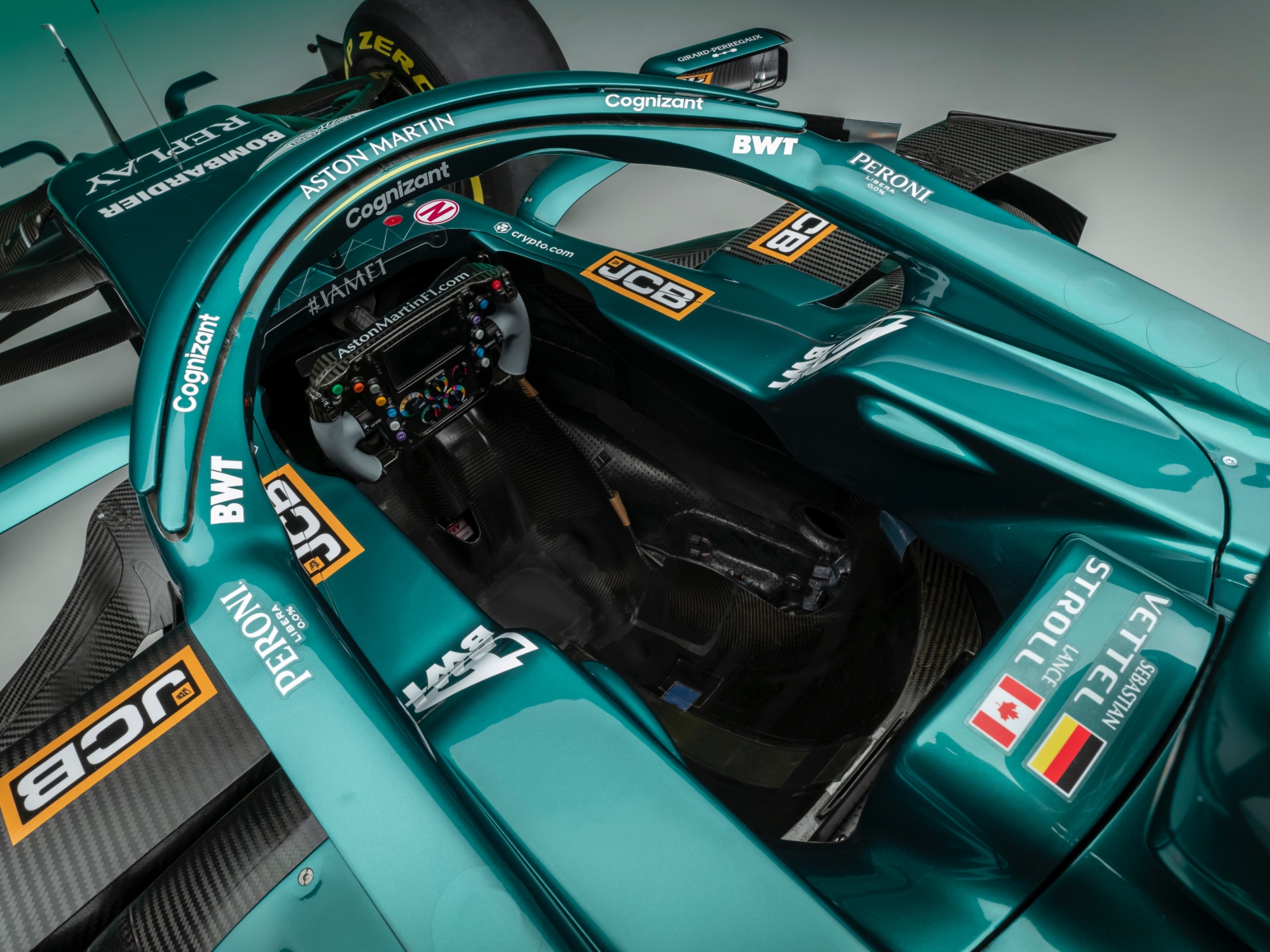
We aren’t trackside with Lewis Hamilton, Sebastian Vettel, Lando Norris, Pierre Gasly, or Max Verstappen ourselves, so we enlisted the help of a few team engineers. Here to answer our questions, we have Evan Short, team leader of trackside electronic systems for Mercedes-AMG Petronas; Charlie Blackwell, Aston Martin F1’s senior control systems engineer; and Jon Mitchell, control systems engineer specialist for McLaren.
These engineers shared some details of torture testing, explained design and engineering and how the drivers are a part of the process, and even let us know whether, with the right equipment, these very expensive steering wheels could be used in street cars.
Lights out, and away we go!
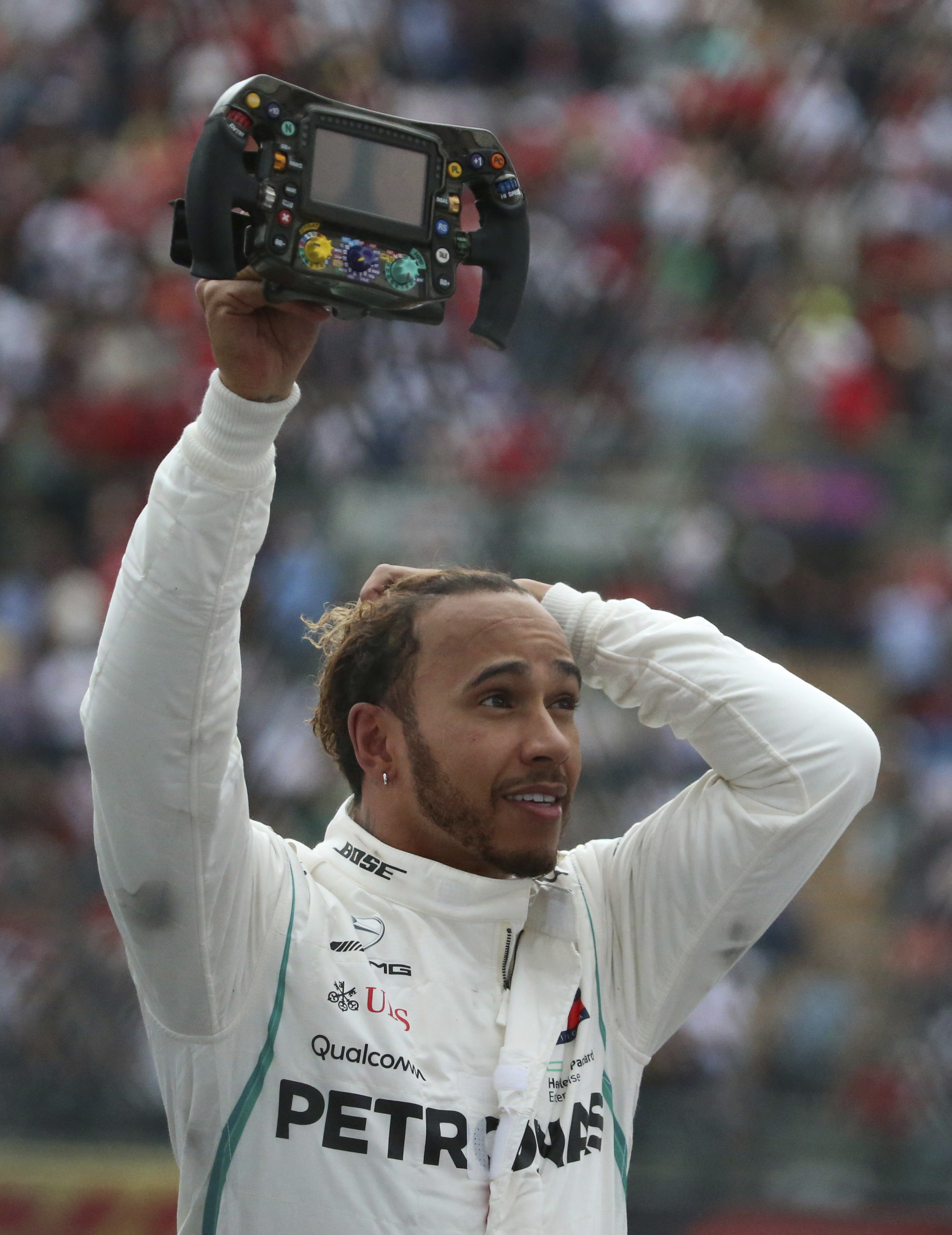
Mercedes-AMG Petronas, Aston Martin F1, and McLaren Give Us All the Answers about F1 Steering Wheels
We had a lot of questions. These team engineers had the answers.
(These interviews have been condensed and lightly edited for clarity.)
Q: How much changes from season to season when it comes to design and operation?
Evan Short, Mercedes: This varies a lot. There are seasons in which the wheel changes dramatically from one year to the next, and we have seasons in which it is relatively frozen. For 2021, due to the sport’s response to the COVID-19 pandemic and the limits placed on development, the wheel was frozen from the first race with the design of the wheel homologated. Knowing this, we completely changed it coming into this year.
In fact, at the end of last year, we ran our 2021 steering wheel for the first time. In the last races, we ran a few wheels, each of the drivers tried them out and made sure they were happy with them, and we carried them over to this year. The design of the wheel tends to change fairly dramatically every two or three years, while the operation of the wheel and the specific layout and setup of the wheel for a driver changes dynamically race by race.
Jon Mitchell, McLaren: Generally, there are relatively few changes season to season, both physically and functionally. Functionality of the buttons and switches can be configured by software, which is easier than mechanical reconfiguration. However, there is usually a small amount of driver preference when a new driver uses the wheel for the first time.
Charlie Blackwell,
Aston Martin: Typically, we don’t tend to change a great deal on the steering wheel from year to year unless there’s a large change to the power unit or regulations. However, this year we had some fresh input and a new set of requirements with Sebastian (Vettel) joining the team. This, combined with the new homologation restrictions imposed by the FIA, meant that we designed and manufactured two completely new steering wheels for Lance Stroll and Vettel. Last year, both drivers used the same physical design with minor differences in the configuration. This year, they are physically different as well.
Q: How much input do the drivers give you in its design? Do they dictate button, knob, and paddle placement? Do they dictate the size, pressures, or how many paddles they get?
Mercedes: All of the above, really. From the simplest thing, as part of our dynamic week-by-week tuning, the drivers are extremely involved. So, the changes from session to session — layout of the wheel, button positions, button colors, button functionality, what appears on the dash, where the switches are mapped — all of that sort of thing, the drivers would be very involved.
On a longer-term basis, variations of things like the clutch pedals are very much guided by the drivers over the course of the season. If we start a new wheel, we get the drivers involved in the design of the wheel. Our current wheel, for instance, was structured with a lot of assistance from Lewis (Hamilton), in particular, who was one of our drivers when we last did a major structural change.
That means things like the ergonomic layout of the wheel, how their hands are positioned, the basic choices such as where the dash display goes — whether on the steering wheel or on the car, which is an amazing knock-on effect for the whole car. Some teams have their dash display built into the chassis, so their wheel is quite small. There are some advantages to that and also some major disadvantages because they have this large element built into the chassis where the driver’s knees go. So, that’s a decision we have to make even before we design the actual chassis.
The short answer is: The drivers are very involved right from the long-term decisions, such as how the wheel and the chassis work together, through to medium-term decisions, such as how the wheel is structured right to the very short-term decisions of how we lay it out and use it week by week.
McLaren: Driver preference is always considered, and their comfort and ability to use the wheel is very important. They generally have an input on contact points and are briefed on function. Switches and buttons that are used more often are placed in areas that are easier to access, and some of this is allocated by driver preference. Size and form of grips and paddles are tailored to each driver to ensure they are comfortable and can operate the wheel effectively.
Aston Martin: The drivers have a great deal of input into the physical design of the steering wheel. We have a set of requirements that need to be met from an engineering standpoint, but the drivers pretty much dictate the positions of the rotary switches, buttons, and paddles. It’s essential that all functions are easy to operate when driving the car at more than 180 mph without moving their hands off the steering-wheel grips. The drivers have different-sized hands and sit in slightly different positions in the car, so the button positions are tailored specifically so they are within easy reach of a thumb or finger press. The design of the paddles also needs to be easy to reach without having to move their hands around too much.
Q: What is the process between engineers and drivers to get the extra paddle presets aligned?
Mercedes: It’s an iterative process over the course of a race weekend. We arrive at a race weekend with some baseline settings that the engineers come up with. They will, in many cases, run those with the driver on the simulator, and in some cases it is straight into the weekend if we think this setup will be suitable for this track. The moment the first session begins, we are into our tuning process, so all the way through FP1, FP2, and FP3 the drivers are giving us feedback on the radio and we are watching the data.
With the performance engineer, for instance, keeping an eye on the diff mapping of the car, they will see things in the data the driver might not pick up or they will also be told things that the drivers themselves notice. By the time the car comes back into the garage, we will be working on the next set of maps, the next set of presets. We will send those to the driver, they pop up a map on the screen, and we say, “We have this new set of maps based on what you said on this last run. What do you think?” We load them into the car and have them ready for the driver to try. Because he has these rotary switches, he has the option of making selections so he can keep what he is happy with, try something experimental, and come back.
The drivers are dynamically involved. One of the key tools for that is the marker button. The marker button allows the driver to flag something in the data, as he’s driving around the track, that he thinks we should be interested in. It’s just that sort of iterative process where he would say, “It felt a bit funny there. Let’s talk about that later.” When he comes in, his engineer would go to him and ask, “What did you mean in Turn 3 there? What was that?” The driver might say, “Oh, I felt something a bit weak in the back and would like to work on the diff lock in that corner.” It’s a very interactive process.
McLaren: (The process is) very collaborative between driver and engineer to tune what is required at each track and each session. More background settings are adjusted from an instruction to the driver.
Aston Martin: There’s an enormous amount of functionality available through the steering wheel, so it’s up to us to define what are the highest priority items, particularly those that need to be accessed quickly and easily. We then work with the drivers to decide what goes on each paddle or button and then stick with it so that it becomes second nature to them. At each circuit, we then determine what levels are required for each of the buttons and paddles so that the button or paddle delivers the required shift in balance or functionality when it’s pressed. These can be tailored specifically for certain corners or types of driving, such as qualifying laps or tire or fuel economy. During practice, we will use their feedback to optimize the setup with the aim of giving them the right tools to maximize the performance of the car.
Q: How much differs from driver to driver?
Mercedes: They are pretty different. The only thing that is common is the carbon structure of the wheel. Grips are different and customized from driver to driver, every rotary switch is different from driver to driver, the position of the switches, the colors of the switches, the layout, the stickers. The choices of what goes where on the wheel are very different. The shift pedals are different from driver to driver. Clutch pedals are very different from driver to driver — very much molded to the driver’s hands to match the driver’s hands with their gloves on.
So, the wheels are extremely different from driver to driver. Of course, what they actually see on the dash is completely customized, so there are 100 pages or so they can go through, and each of those is customized, too.
McLaren: Generally, specification is similar between drivers, as it is easier to manage at the track and in the factory for service/repairs. Functions across the wheel are similar car to car, but the specific settings will vary to suit (each driver).
Aston Martin: Physically, the wheels are different, but both are able to achieve the same level of functionality. The main differences are due to ergonomics, such as the grip, rotary, and button positions. In terms of the configuration, there are some things that are the same from driver to driver, such as the main rotaries and functionality of the critical buttons. However, underneath all of that, the brake balance, engine braking, differential settings, and so on are all tailored to the drivers needs, so the setup can be quite different from car to car. It can also end up being exactly the same.
Q: How much input do the drivers have in the strat settings?
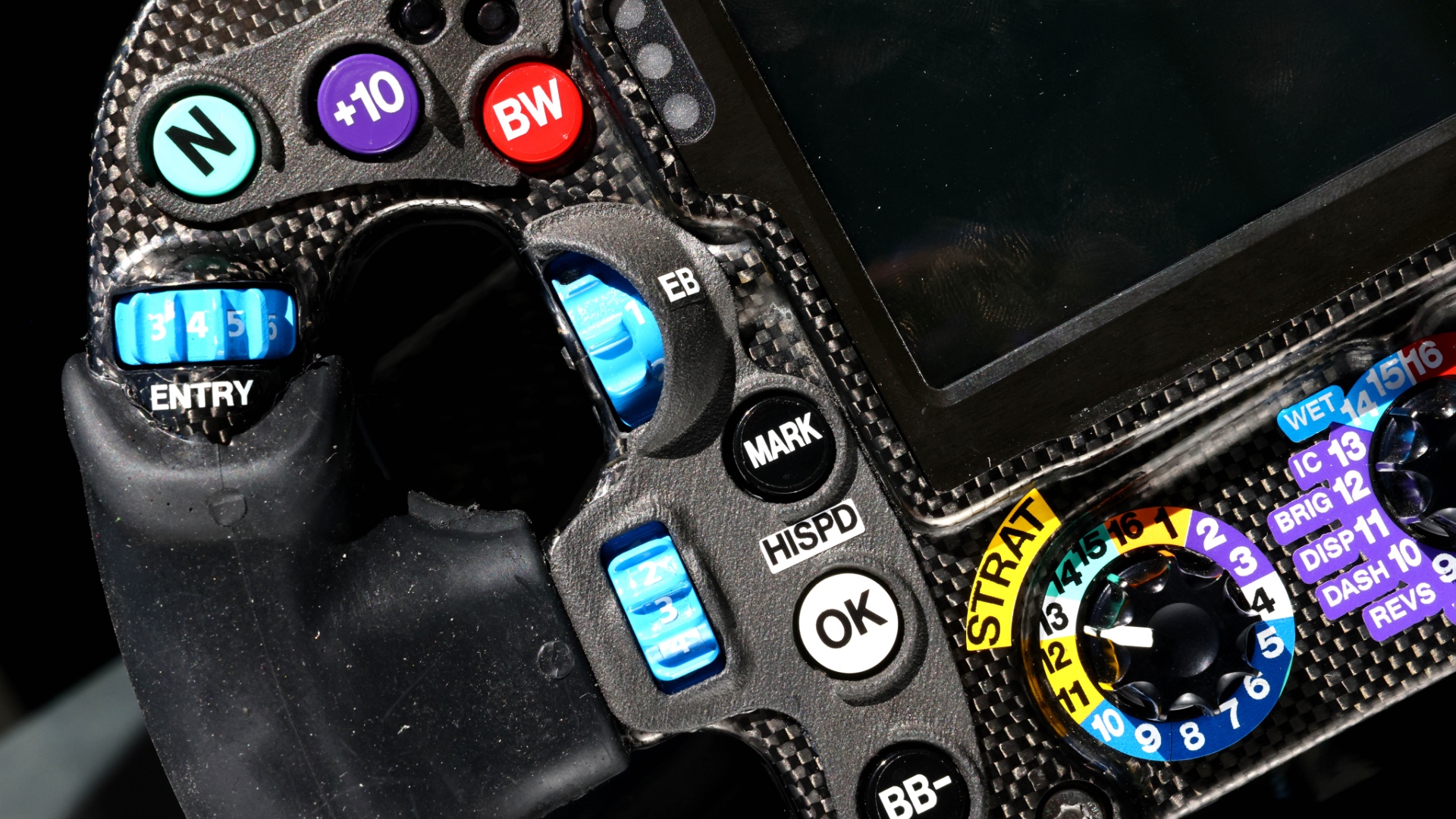
Mercedes: They have input both at the early level and during events. When we are working looking towards next season, the drivers will get involved with HPP (Mercedes High Performance Powertrains) and say, “I am interested in a mode that gives me more deployment in certain conditions or a mode that allows me to recharge more rapidly if I am stuck behind someone.” They give feedback in the quite-early development level, and that knocks on both how we physically develop the power unit and then how we develop it on the dyno.
They get very involved during a race weekend and how we set up things like energy deployment. Early on in the weekend, we will discuss if we think we will use deployment in this corner, or if you are stuck behind someone you might want a bit more power here. And they will push back on that and say, “No, actually, that is not an area where I will ever be able to pass, but I would like to have a bit here,” and so on.
McLaren: A lot of settings across the wheel will have driver input but are not necessarily set by the driver. Once sensible settings are decided, it is then kept somewhat static so the driver can navigate important settings independently as well as with instructions/suggestions from the engineer.
Q: What kinds of regulations does the FIA impose on steering-wheel design?
Mercedes: The steering wheel is quite heavily regulated because it is really a safety feature. It is what we call a Class A part. That means both FIA restrictions and restrictions from our side because we consider it one of the most safety-critical elements of the car. It’s obviously one of the only three things the driver has to interface with the car.
He has the throttle, he has the brakes, and he has the steering wheel. In the end, the steering wheel and the brakes are the two that will really get him out of trouble. From that point of view, there are structural requirements.
The FIA insists that the driver be able to remove the wheel in order to get out of the car quickly in case of an accident. They define a time, and that has changed over the years. They also insist on some safety features including, for instance, the fact that nothing protrudes beyond the plane of the wheel, so in a frontal accident if the driver is thrown against the wheel, nothing causes damage. That rule springs from the (Michael Schumacher) accident in 1999, which actually printed the shape of one of those rotary switches into his helmet.
The wheel has to be safe. There is an impact test as a requirement. The steering wheel is used when we impact-test the steering columns and again based on the idea that the drivers could experience severe forces. Because we consider it a Class A part, it has to go through a certain degree of sign-off. Every element has to be tested for the torques that we expect, as a safety factor, and there are pretty strict requirements in terms of the software and the electronics sign-off as well.
McLaren: As with most of F1, (there are) lots of rules: some on form, some on strength, and some on application.
Q: How did the saga of Mercedes-AMG Petronas’ Dual Axis Steering (DAS) play out in the garage last season? How’d it impact your operations?
Mercedes: By the time we got to the first race, DAS was like an old friend to us because we had been working on it in the background. We knew it was coming, we were preparing for it, but we were a bit surprised at how quickly it was noticed by other teams. We did expect it would be noticed, but it was picked up almost instantly because, for the first time ever, there was a live television feed during the winter test.
The first time Lewis (Hamilton) used the DAS on track, it was immediately noticed by teams. Twitter was ablaze instantly, which was a bit surprising to us. What it meant was that it added another hydraulic and complicated system that we had to deal with during the setup of the car. But it gave us this degree of freedom, which was really great. So, we did enjoy it for the year we had it.
Q: How do you design a button or knob to stay within a set detent and not shake loose but still have enough play for the driver to use it at speed?
Mercedes: It is a challenge, and we are lucky enough that the underlying switch comes from an external supplier that uses them for aircraft. We share a lot of the same challenges that an aircraft would, in particular, military aircraft: a high degree of vibration, a high degree of thermal variation over the course of a race, the operator having to wear gloves and not being able to spend a lot of time focusing on the control they are using.
We do insist on pretty solid detent feedback where the switch is, so we use these off-the-shelf military switches rather than designing something custom. The result takes some compromises, but we will take one of those switches over something that might be more suited dimensionally to our steering wheel because we want that robustness and reliability from the aircraft part.
McLaren: Ensuring the driver is confident and accurate in adjusting settings is very important. This makes the switch selection/design in the wheel critical to its function. It is rare for drivers to make incorrect adjustments, but the dash itself will also show the driver the adjustment they have made to confirm their choice.
Q: How much work goes into designing a button or knob to be usable through the driver’s gloves?
Mercedes: It’s a big focus. One of the things you will notice is that even though the rotary switches are labeled, we don’t count on the driver being able to see the labels because he is operating with gloves in a vibration environment. Any switch change he makes on the wheel is mirrored on the dash, in quite a large display, so he is not having to count on looking down and looking at a number.
Aston Martin: The rotary design doesn’t change very much. We design a rotary that you can pinch with your fingers, so it’s just big enough that you can do it with a glove. The gloves are really thin.
McLaren: Due to the speed, vibration, and harshness of an F1 car, all buttons, switches, and knobs on a steering wheel feel very stiff and hard out of the car. However, when the driver is in the car with gloves, they need very positive switches to be sure they have made the required adjustment. Over many years of use, we have evolved to use the components we do, as we are confident they work reliably.
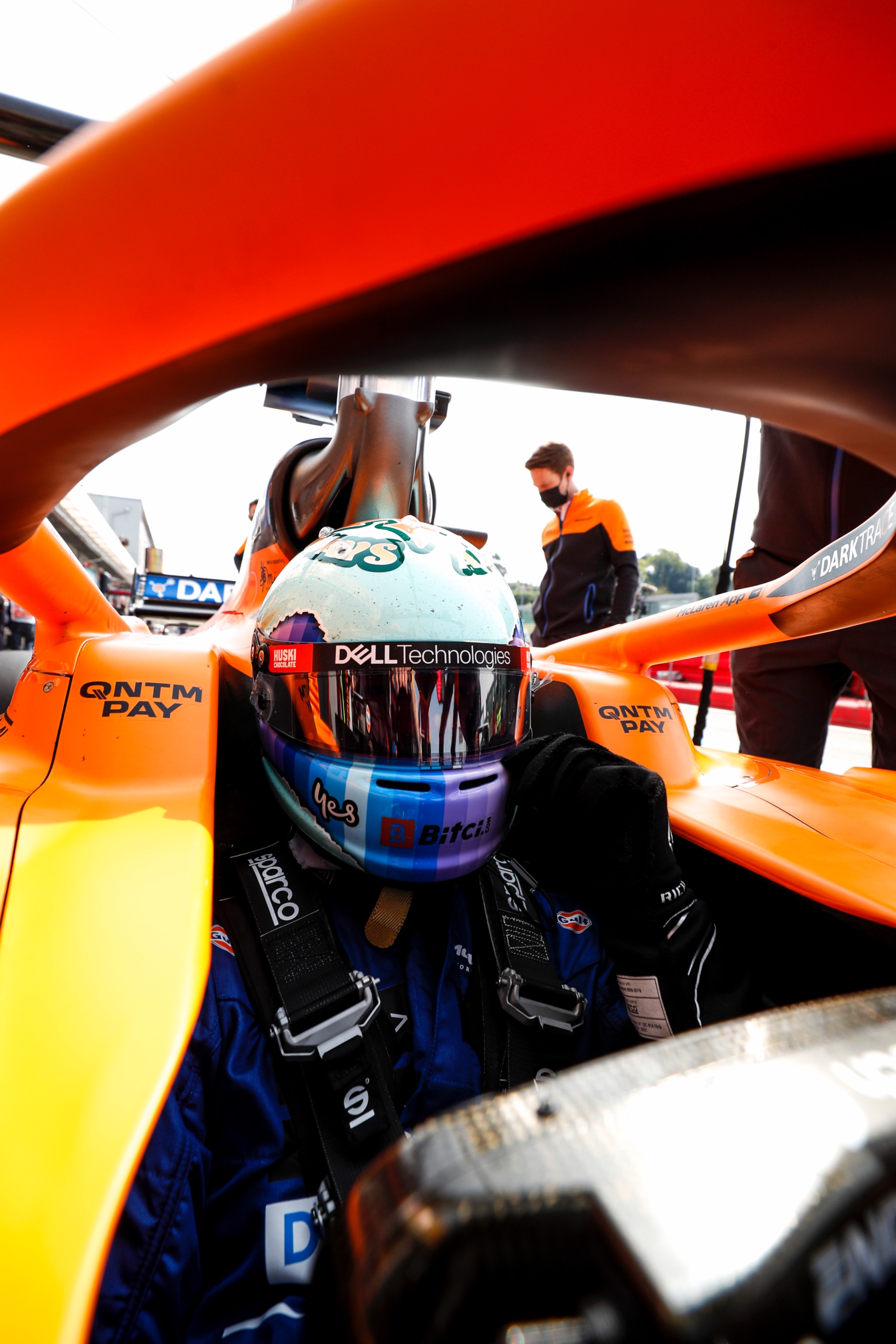
Q: What does torture testing look like?
Mercedes: The wheels go through the equivalent of a season’s running in various conditions. That means things such as a few hours under water, they run vibration testing, they run on our simulators, doing race distances on our simulator. We are pretty rough on the first development wheel. After that, they still go through the equivalent of about a race distance to sign off before they actually go out on the track.
Aston Martin: To introduce a wheel, we don’t just race it straight away. We then introduce it to make sure that it actually works. The steering wheel is put on the shaker rig for an hour or thereabouts, and it just shakes it quite violently. If, at the end of it, it still works, then we can say that it has passed the shaker test. We then run it on three separate Fridays. We (run it) to accumulate a load of mileage on it. Once we’re happy that there aren’t any issues with it, we will then introduce it to the race pool. There’s also a lot of experience that we’ve built up with certain components that we know work and don’t work, so we know what components to use.
McLaren: All wheels we use must be proven on the simulator before they make it to the track, then they must complete several practice sessions before being raced. In the garage, they are frequently inspected to ensure they operate at peak performance. We typically see components wear out before failure.
Q. Do you recoil every time a driver throws the steering wheel onto the nose of the car after a race?
Mercedes: “Valtteri (Bottas) and Lewis (Hamilton) are very good at that and pretty careful to put it down. We’ve seen it in the past. … I’ve seen a driver in an understandable moment of frustration throw the wheel into the gravel, and you can imagine the face of the guy who spent hundreds of hours building that steering wheel watching it bounce in the gravel. I did make Nico Rosberg run a session with a cracked steering wheel once just to remind him that they were expensive.
McLaren: The drivers are both very respectful of the wheels, but the wheel is reasonably robust. So far, we’ve not had any unexpected issues.
Aston Martin: Our drivers are very respectful of the equipment and are careful to place the wheel on the tub when they get out of the car. There have been instances in the past where a wheel has been dropped, but it’s usually not the driver’s fault. When this does happen, we pull the wheel out of the race pool and perform a full inspection, service, and test before reintroducing it for racing.
Q: How many steering wheels are made each season? And how much does each cost?
Mercedes: Like the cost of any F1 component, it is a bit difficult to say because the real cost is in the development and the time that goes (into it). We think our ballpark figure for the materials, in particular because of the electronics and the display, is about $36,000. By the time you add in all of the development and the time signing it off, it might be more than that.
We make between six and eight wheels a year between the two drivers.
McLaren: We run three wheels per car through the season to ensure we have sufficient stock to replace any wheels showing issues or damage. All wheels are of identical specification and are run through the practice sessions to be proven out for race use if they are needed.
Aston Martin: We will typically make between six and eight steering wheels per year, depending on how much mileage has been accrued. In terms of cost, that’s incredibly difficult to define as there’s the unit cost of all the components as well as the development and manufacture time. This year, we have two sets of carbon molds for the different wheel designs, so that has doubled some of the manufacturing costs.
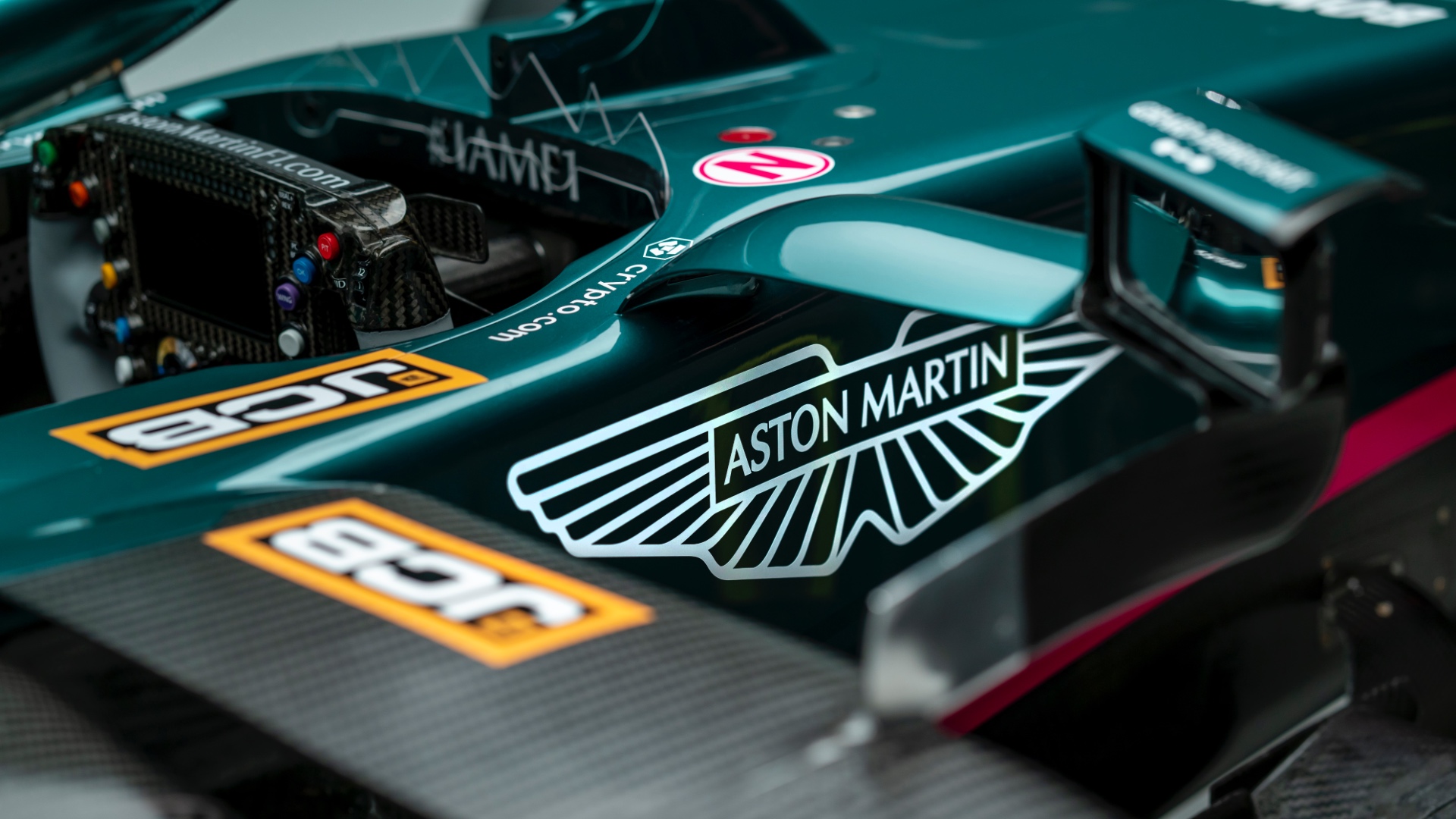
Q: What’s the production process look like? Is it handlaid carbon or prefab?
Mercedes: For the most part, handlaid. Like any component in our factory, we are not looking at large production volumes. We are talking about six or eight pieces plus some test units, so it is very much handwork. That goes for the electronics as well. The printed circuit boards where every wire is carefully laid in manually, it is an art to literally tie ribbons around each of the wires inside. The guys doing it really are artists.
McLaren: The wheel is a mix of handlaid carbon and machined components. The shell is carbon fiber, which contains all the electronics, switches, buttons, and wires. It is all pretty tight inside the wheel but very neat and tidy.
Aston Martin: The main body of the wheel is handlaid carbon fiber with some integrated machined parts. Once the body has been completed, it’s passed to the electronics department where all the units, displays, rotaries, and buttons are carefully wired together. It’s essential that everything is well packaged underneath so that nothing can vibrate or work loose. So, when you open up a wheel, it’s incredibly neat and tidy. In terms of how long it takes, the whole process from carbon layup to a completed wheel is around three to four weeks.
Q: Which bit of the wheel wears out the quickest during a Grand Prix?
Mercedes: The grips by far. One of the reasons for that is grips are thin because rubber is heavy. We want the driver to have a comfortable grip, a solid grip on the wheel that doesn’t slip in the wet, but we don’t want a wheel that is heavy and has a lot of rotational inertia. So, we run the grips to the bare-minimum thickness. As a result, we get frequent complaints that they are wearing out.
Aston Martin: It’s very rare that anything wears out during the race, we life (test) everything so this doesn’t happen.
McLaren: Usually the rotary switches/knobs, especially if it has been wet and/or dusty. The inside of the wheel is very well sealed to the external environment, so we rarely see issues with the internal electronics. Sometimes the quick release splines wear as it comes on and off a lot over a weekend (especially in dusty conditions), so they are all closely monitored.
Q: What type of rubber is used for the grips?
Mercedes: It’s a moldable rubber that is cast onto the grips rather than something that is wrapped around it. … The grips are a carbon frame, and the rubber is cast on the top of it, which has the advantage of allowing us to form whatever shape we need.”
McLaren: Butyl rubber molded around a carbon frame that is designed to fit the hand of the driver perfectly.
Q: Weird question, but how much wiring is sandwiched in between the carbon?
Mercedes: It’s a good question. I don’t have it for the steering wheel. There is not a lot of wiring in the steering wheel. On the car, there is probably 1.2 miles of wiring.
The steering wheel itself would be somewhere in the order of 33 feet of wiring. It’s not a lot because the bulk of it is in the printed circuit board or series of printed circuit boards. We try to keep the actual wire runs very short. In particular, the main connection to the wheel is through that electrical connector that joins the wheel to the steering column. That’s a series of both analog and digital gadgets. That length of wire is the trickiest bit of the whole wheel because you have to connect it to something spinning.
That’s the source of one of our biggest steering wheel failures, actually, the connection between the wheel and the steering column. We famously stopped the car in Singapore with Nico Rosberg some years ago on the grid when the car refused to shift into gear. He did manage to get it going to get him off the line at the start of the race, but it failed at the pit stop, and we traced that to a failure of that component. It was very frustrating: All the other cars are leaving the grid, and you are standing there holding the wheel.
McLaren: I don’t have an exact answer but there certainly isn’t much room under the shell. It is a very neat and compact installation.
Q: How much of the wheel’s design can you change during a race weekend to suit the driver?
Mercedes: This particular year, not as much as in the past. Conventionally, the wheels have been pretty open, we’ve been able to change quite a lot of the layout, the design, arriving with new parts every weekend. This year is different.
This year the car is on lockdown, and the wheel is one of the parts that was homologated at the first race because of the COVID situation. As of Thursday in Bahrain, we are not allowed to make changes to the wheel. In terms of the physical design of the wheel, we can’t do anything, but we are still allowed to move switches around, we are still free to map things differently, and that’s where the bulk of the work happens. Certainly what’s behind each one of those switch positions will be very different from track to track. We may even change the layout. That’s part of driver customization. That will continue race to race.
McLaren: Physically, the wheel remains unchanged, but the setting behind all of the switches are constantly changing. However, once under parc fermé, we cannot make any further changes. From qualifying onwards, we cannot make any further adjustments beyond what is already set. So, we usually have a qualifying set of switch positions and a race set.
Aston Martin: Generally speaking, we can’t. This year, the steering wheels are all homologated, so to make any changes we have to apply to the FIA who will then approve changes providing they are for either driver comfort or safety. This means that the physical wheel doesn’t change. The main item that does change during the weekend is the dash display. This is something we can update to suit the driver’s requirements reasonably quickly from session to session.
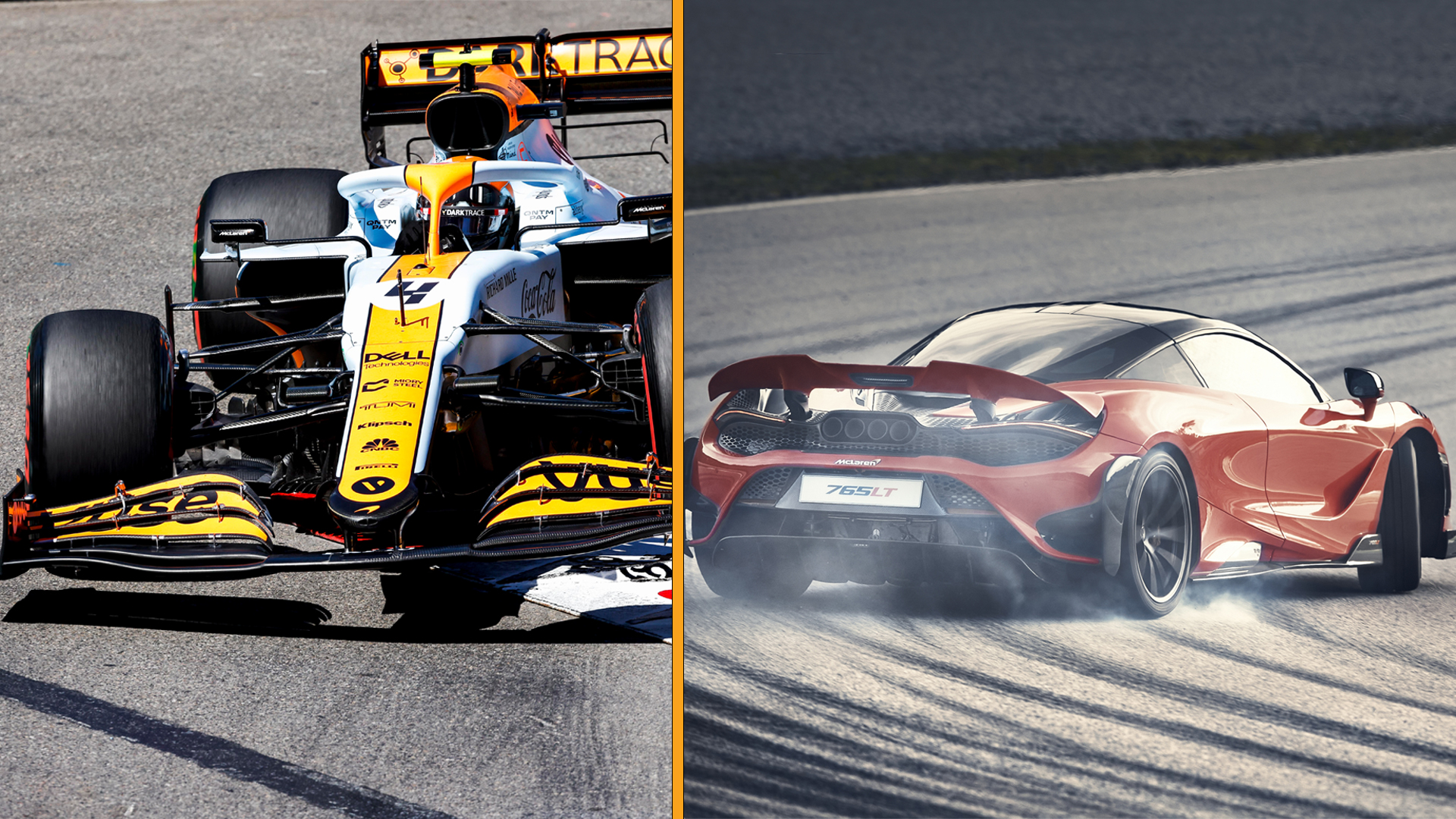
Q: If you had the right hub, could you attach one to a street car?
Mercedes: Absolutely, yeah. There is no reason, if you have the right CAN-bus software, which is a common thing on road cars, you can take a road-going Mercedes and interface our wheel. The torques are wildly different, (there’s) no airbag, and you have to accept some safety compromises. But yeah, absolutely.
CAN bus is control-area-network bus, so it is a common-automotive-network bus, and most road cars will have some variant of that. A modern Mercedes will have multiple buses around the car where all the various bits of the car communicate with each other, so the engine control might be talking to the headlight control and so on. We have a very similar idea. We have 11 CAN buses on the car, so every major device in the car, every control unit, is communicating with one of those buses, and they all connect back to the central unit that controls the whole operation.
McLaren: I’m sure with the right coding to the ECU, it would be possible. Above the mechanical requirement to steer the car, the steering wheel is to the car like a keyboard to a computer. It serves as an input to make software changes.
Aston Martin: Absolutely, with the correct hardware and software. The main challenge would be the CAN-bus interface between the steering wheel and the road car’s ECU. However, providing you have all the details of the software on the car’s ECU, you could easily design an interface that would receive and transmit all the correct signals to allow the wheel to control the car.
Evolution of the F1 Steering Wheel
The wheel has drastically changed over the course of F1’s history. Check out this video to see it in action.

Let’s Talk: Comment Below and Reach Out to the Guides & Gear Editors
We’re here to be expert guides in everything How-To related. Use us, compliment us, yell at us. Comment below, and let’s talk. You can also shout at us on Twitter or Instagram, or reach us all here: guidesandgear@thedrive.com.